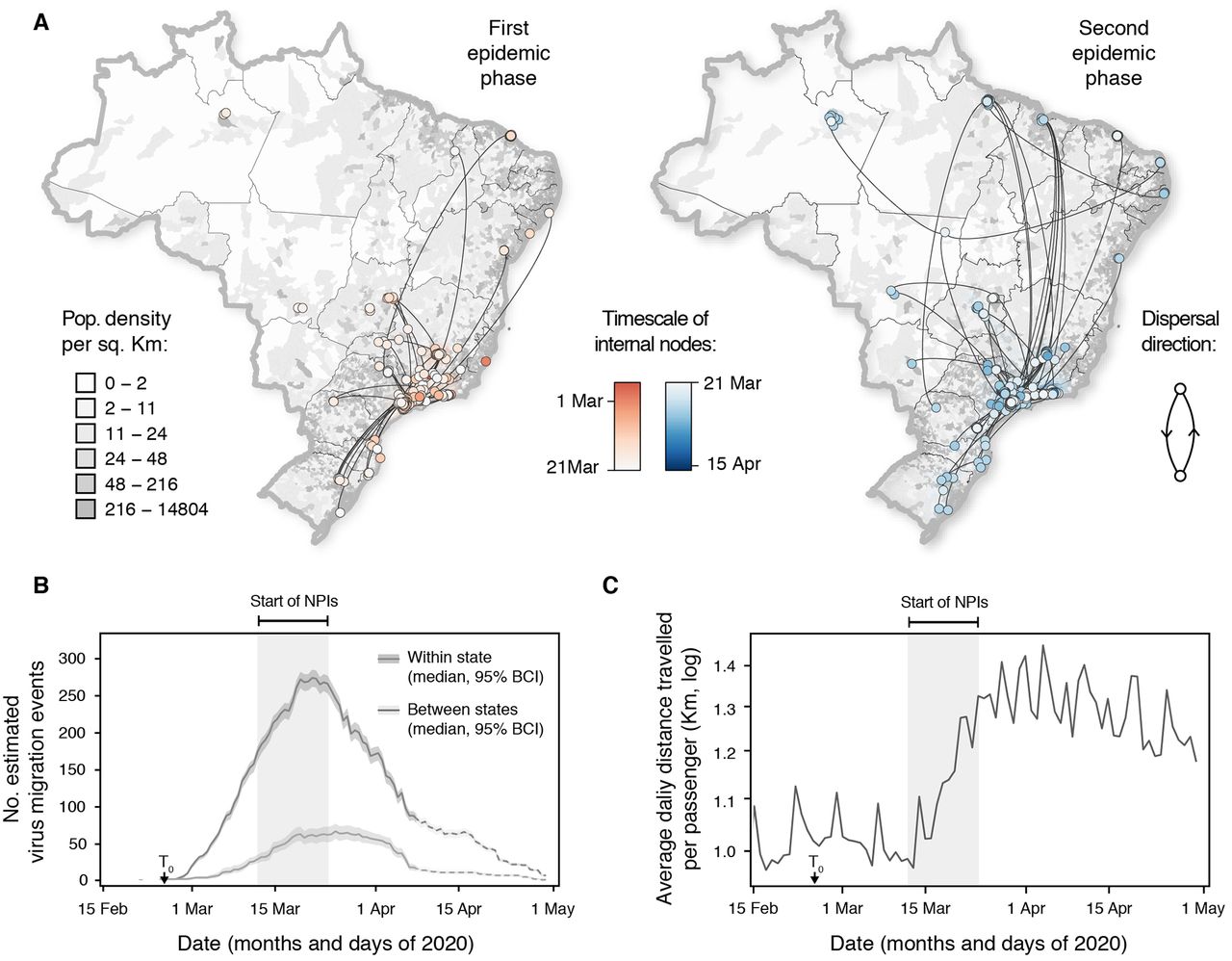Combining mobility, genomic and epidemiological data to look at the transmission of COVID-19
We have a new paper out combining mobility, genomic and epidemiological data to look at the transmission of COVID-19 in Brazil. I’m biased, but this is a groundbreaking study that was only possible due to the collaboration of great team with over 70 researchers from Brazil and the UK under the CADDE project. See the abstract and link to the ungated version of the paper below. Thanks Darlan Candido, Nuno Faria and Ester Sabino for leading the team.
Candido, D. S., et al (2020). Evolution and epidemic spread of SARS-CoV-2 in Brazil. Science. https://doi.org/10.1126/science.abd2161

Abstract
Brazil currently has one of the fastest growing SARS-CoV-2 epidemics in the world. Owing to limited available data, assessments of the impact of non-pharmaceutical interventions (NPIs) on virus spread remain challenging. Using a mobility-driven transmission model, we show that NPIs reduced the reproduction number from >3 to 1–1.6 in São Paulo and Rio de Janeiro. Sequencing of 427 new genomes and analysis of a geographically representative genomic dataset identified >100 international virus introductions in Brazil. We estimate that most (76%) of the Brazilian strains fell in three clades that were introduced from Europe between 22 February11 March 2020. During the early epidemic phase, we found that SARS-CoV-2 spread mostly locally and within-state borders. After this period, despite sharp decreases in air travel, we estimated multiple exportations from large urban centers that coincided with a 25% increase in average travelled distances in national flights. This study sheds new light on the epidemic transmission and evolutionary trajectories of SARS-CoV-2 lineages in Brazil, and provide evidence that current interventions remain insufficient to keep virus transmission under control in the country.